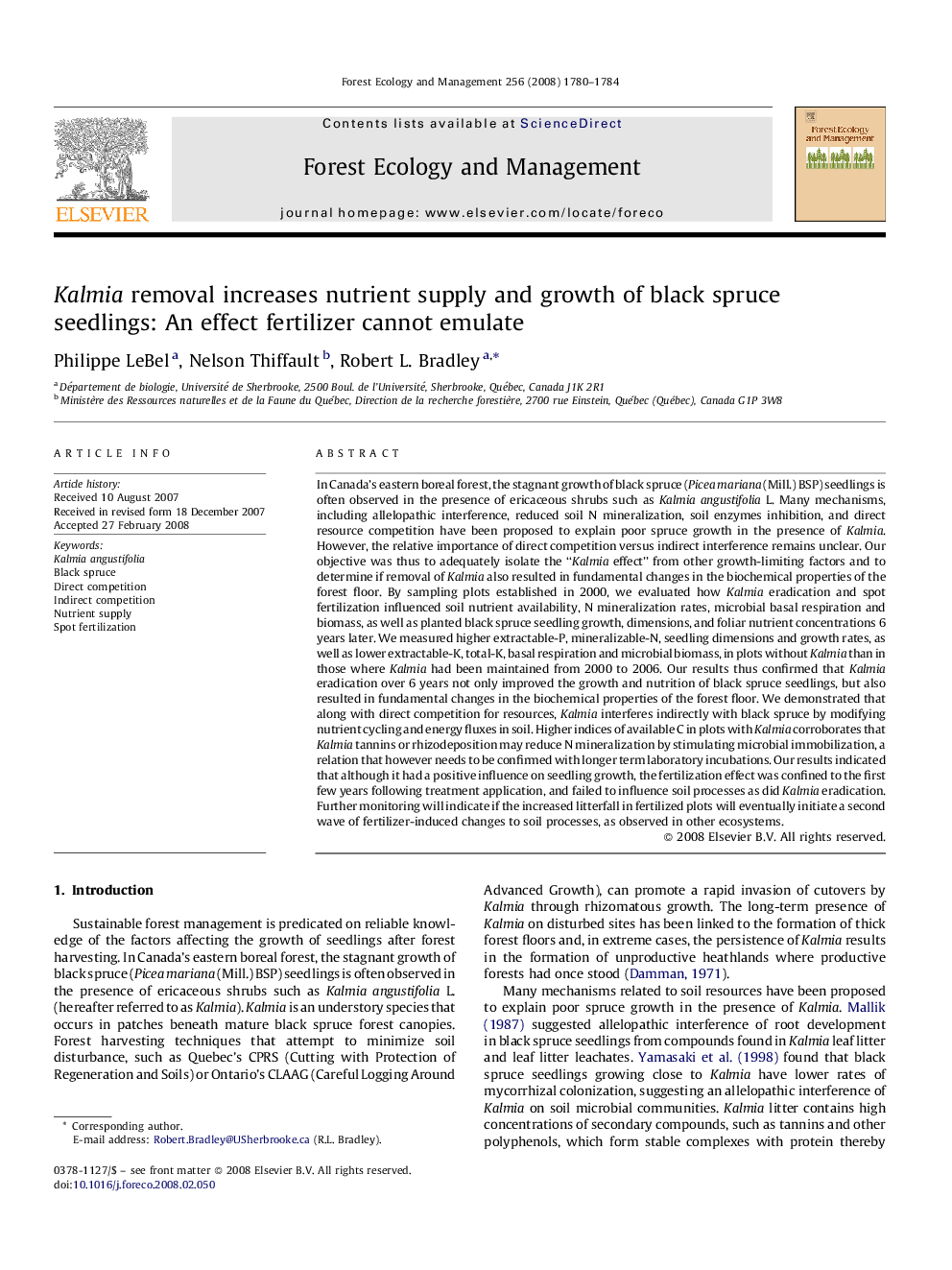| کد مقاله | کد نشریه | سال انتشار | مقاله انگلیسی | نسخه تمام متن |
|---|---|---|---|---|
| 89462 | 159342 | 2008 | 5 صفحه PDF | دانلود رایگان |

In Canada's eastern boreal forest, the stagnant growth of black spruce (Picea mariana (Mill.) BSP) seedlings is often observed in the presence of ericaceous shrubs such as Kalmia angustifolia L. Many mechanisms, including allelopathic interference, reduced soil N mineralization, soil enzymes inhibition, and direct resource competition have been proposed to explain poor spruce growth in the presence of Kalmia. However, the relative importance of direct competition versus indirect interference remains unclear. Our objective was thus to adequately isolate the “Kalmia effect” from other growth-limiting factors and to determine if removal of Kalmia also resulted in fundamental changes in the biochemical properties of the forest floor. By sampling plots established in 2000, we evaluated how Kalmia eradication and spot fertilization influenced soil nutrient availability, N mineralization rates, microbial basal respiration and biomass, as well as planted black spruce seedling growth, dimensions, and foliar nutrient concentrations 6 years later. We measured higher extractable-P, mineralizable-N, seedling dimensions and growth rates, as well as lower extractable-K, total-K, basal respiration and microbial biomass, in plots without Kalmia than in those where Kalmia had been maintained from 2000 to 2006. Our results thus confirmed that Kalmia eradication over 6 years not only improved the growth and nutrition of black spruce seedlings, but also resulted in fundamental changes in the biochemical properties of the forest floor. We demonstrated that along with direct competition for resources, Kalmia interferes indirectly with black spruce by modifying nutrient cycling and energy fluxes in soil. Higher indices of available C in plots with Kalmia corroborates that Kalmia tannins or rhizodeposition may reduce N mineralization by stimulating microbial immobilization, a relation that however needs to be confirmed with longer term laboratory incubations. Our results indicated that although it had a positive influence on seedling growth, the fertilization effect was confined to the first few years following treatment application, and failed to influence soil processes as did Kalmia eradication. Further monitoring will indicate if the increased litterfall in fertilized plots will eventually initiate a second wave of fertilizer-induced changes to soil processes, as observed in other ecosystems.
Journal: Forest Ecology and Management - Volume 256, Issue 10, 10 November 2008, Pages 1780–1784